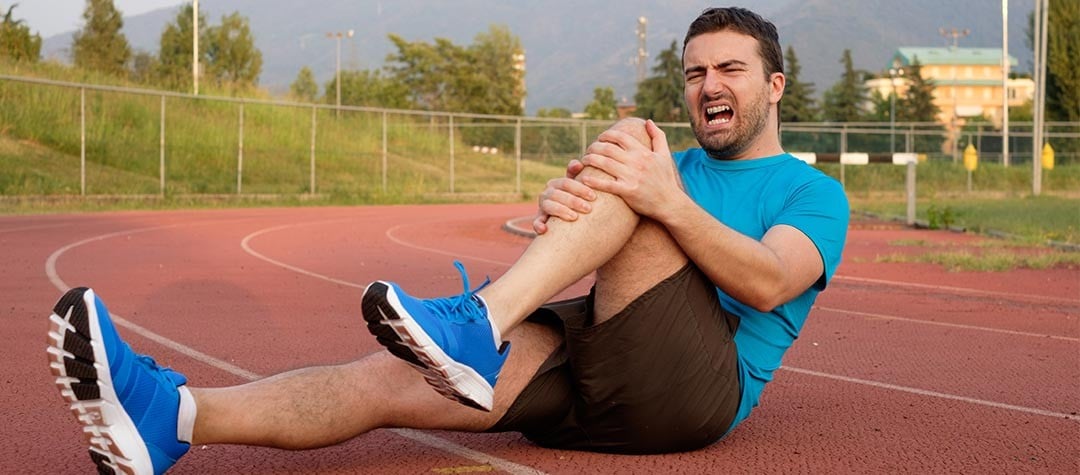Pes Anserinus refers to a gradually worsening pain on the inner knee, below the knee cap. Find out the causes and treatment for the painful condition.
Sometimes referred to as “goose foot” pes anserinus arises from the three-pronged conjoined tendon which inserts onto the inside of the tibia.
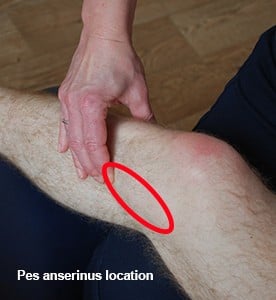
There are three tendons which wrap forwards around the top of the shin bone just below the knee. The tendons are of the semitendinosus, gracilis and sartorius muscles. These are hamstrings and adductors and they have to slide and glide across the bone on each step. There is a fluid filled sack called a bursa which takes the friction, but if the tension increases it can become inflamed and painful.
It is one of those issues which tend to build up rather than suddenly arise. It is sore and tight to use the knee and typically starts sore and stiff in the morning then eases up. However, when you start to run it is then sore and builds up.
Causes of pes anserinus
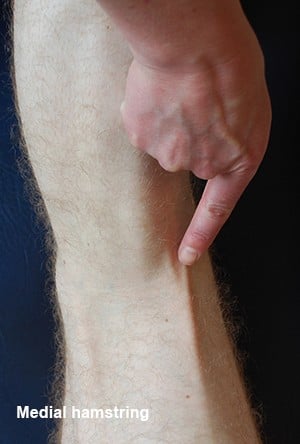
The causes are an increased tension in the tendons as they wrap around the shin bone. The commonest is an increase in tension of the medial hamstring - semitendinosus. This can be the result of issues in the pelvis and sacro-iliac joints.
An alteration in biomechanics which allows the leg to internally rotate or the foot to turn out more will increase the amount the tendons have to wrap around the bone and increase the friction. This can be caused by tight calf muscles, weak gluts and tight hip flexors/illiotibial band (ITB).
Treatment for pes anserinus
Local treatment is ice and anti-inflammatories as well as stopping doing what irritates the bursa. This is one of those issues where stopping running as soon as you feel it becoming sore can be a big time saver. This helps prevent it becoming really inflamed and chronic. It is a difficult area to rest as you cause friction on every step, but stopping running will give it a chance.
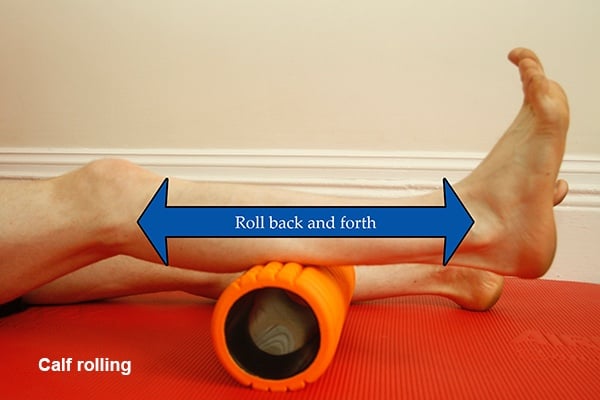
A tight calf is best worked on with stretching, or rolling for a couple of minutes several times a day.
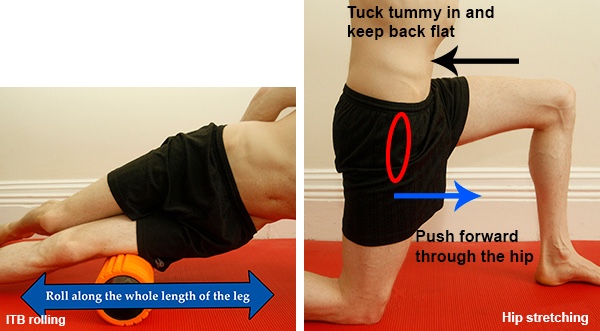
The ITB and hip flexors are lengthened by rolling and stretching – two minutes, twice a day.
Hamstring stretching can be achieved in many ways but you will achieve a better localised stretch in the affected area by having the knee slightly bent and turned in. Play with the position to get the right angle where you feel it in the area.
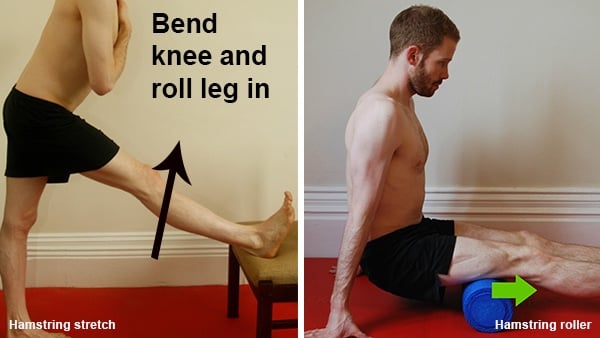
Use of a roller will help to work the lower sections which are often the tightest with this issue.
Improving the control of the knee over the foot is essential in this condition as it is one of the biggest causes. Start with strength of the glutes (medius especially). The wall glutes static hold is a good one because it does not ask for a lot of knee movement and thus does not irritate the bursa.
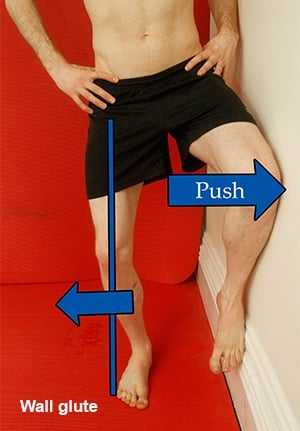
Stand sideways onto a wall with the affected knee outermost. Stand with the feet parallel to the wall. Lift the knee nearest the wall up against the wall and push it into the wall. The standing knee should be bent slightly so the knee cap is in line with the toes. Turn the knee out so the foot is on the inside of the knee. Push the wall knee harder into the wall and hold against the pressure. You should feel your standing leg glute muscles tighten and then fatigue. Build from two minutes to five minutes.
Local treatment for pes anserinus
Manual work around the affected area is effective, but it should be done sparingly so as to not add to the inflammation. A slow pushing of the tissues when on hamstring stretch is better and two minutes twice a day, then ice.
Ice is one of the best things you can do because bursas generally love ice. The use of over the counter anti-inflammatories during the rest period can also be effective or use anti-inflammatory gels. They can be useful especially when the issue is near the surface like this one.
If the problem lasts more than a couple of weeks with rest, then suspect there may be pelvic issues as well and seek help from your running specialist physio.

